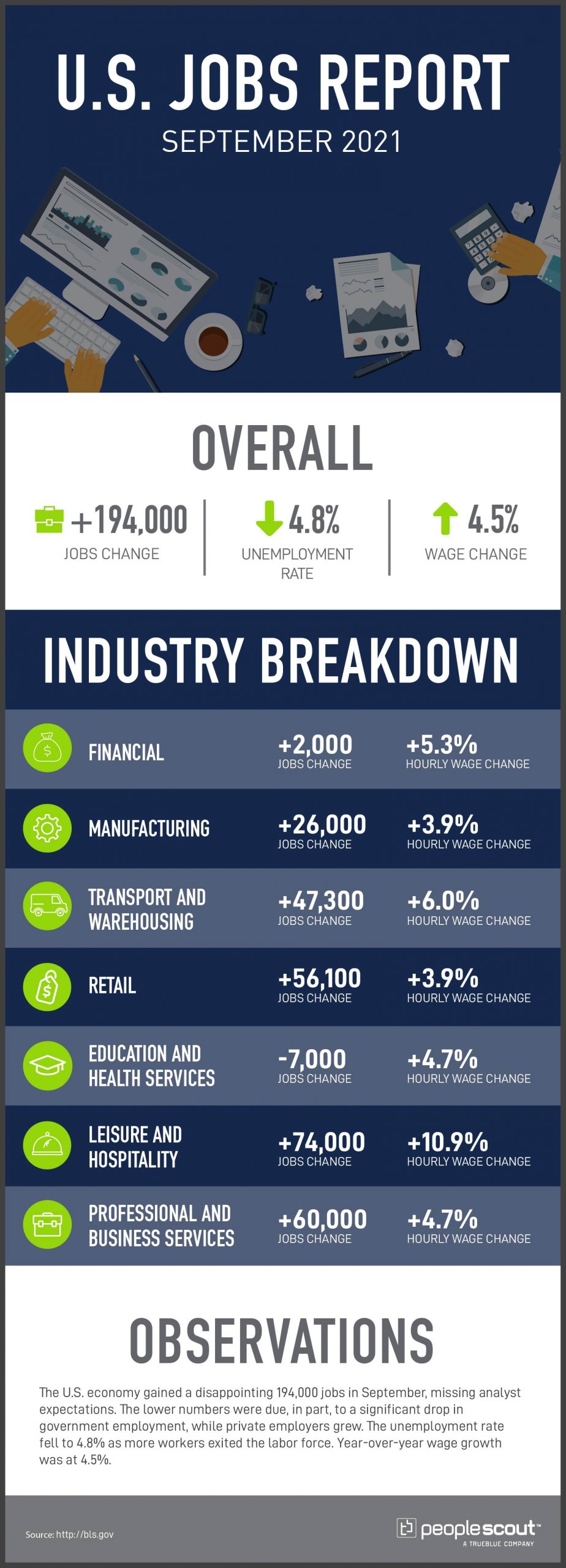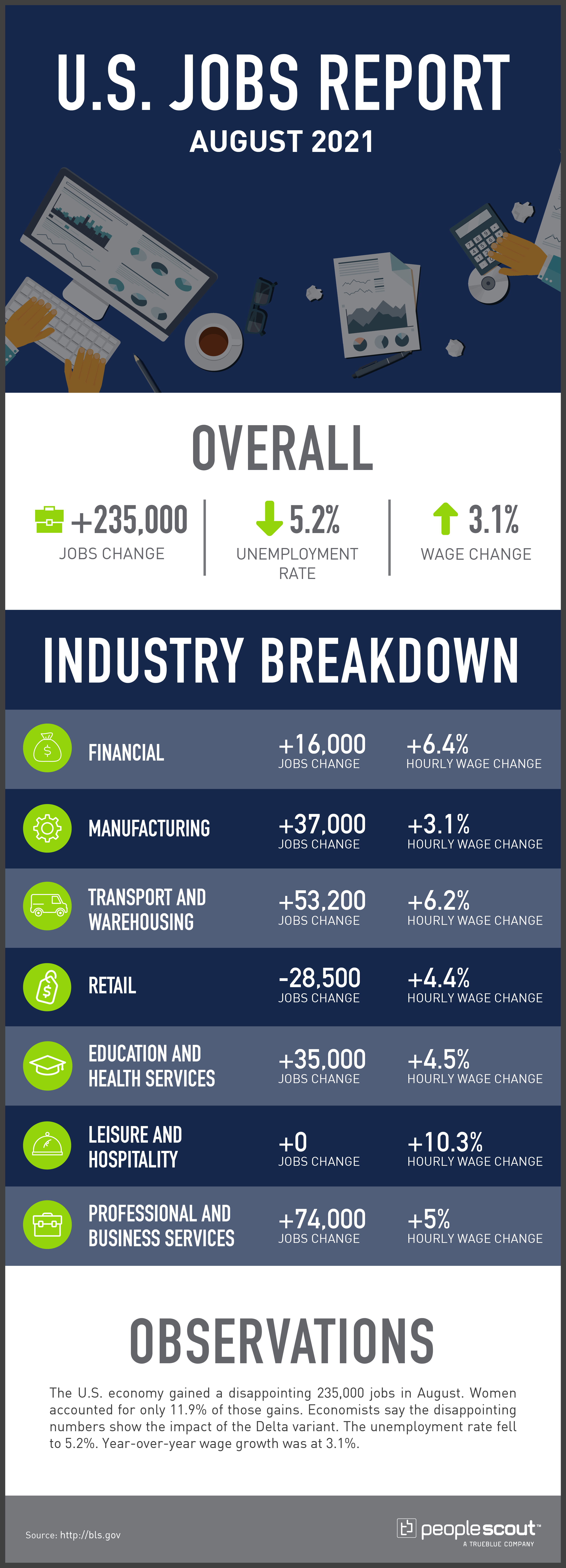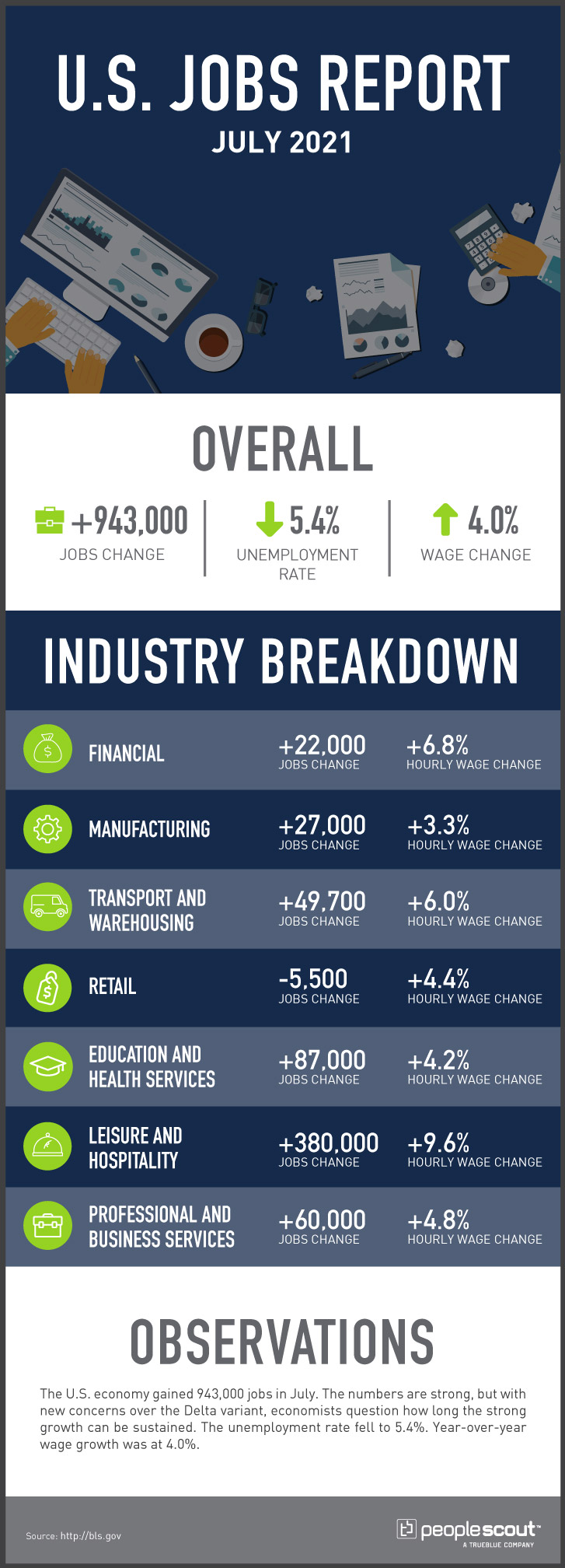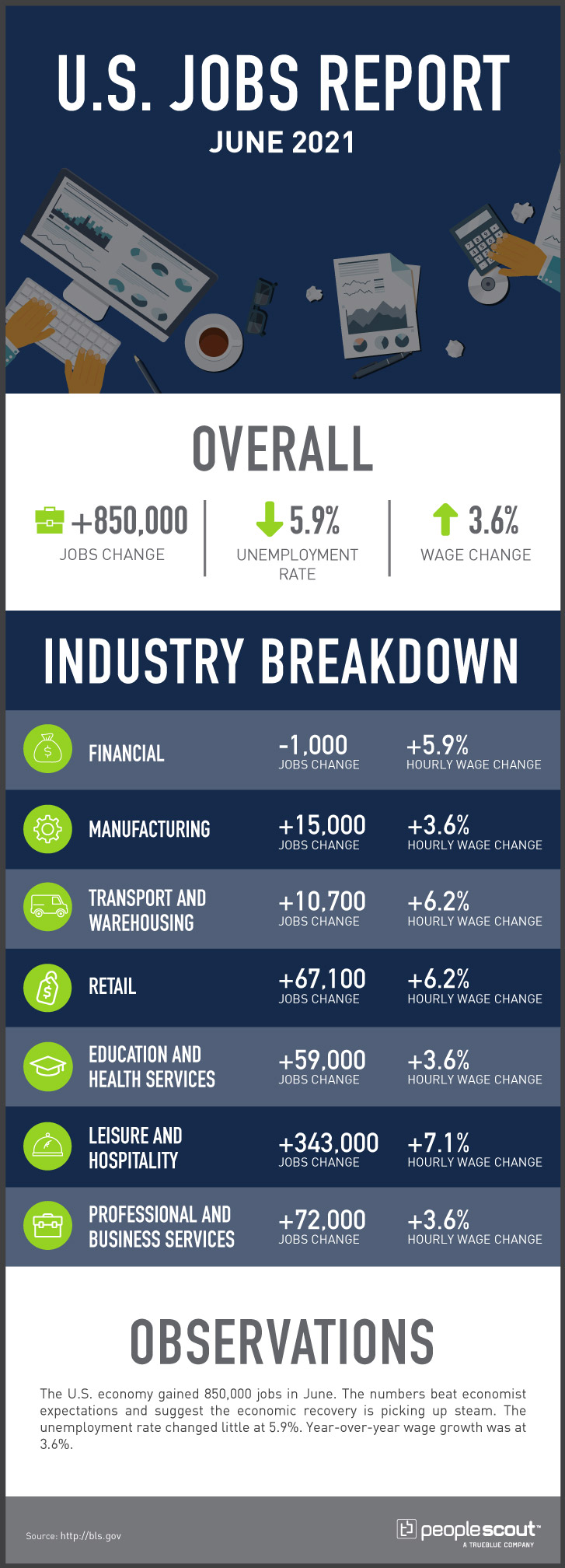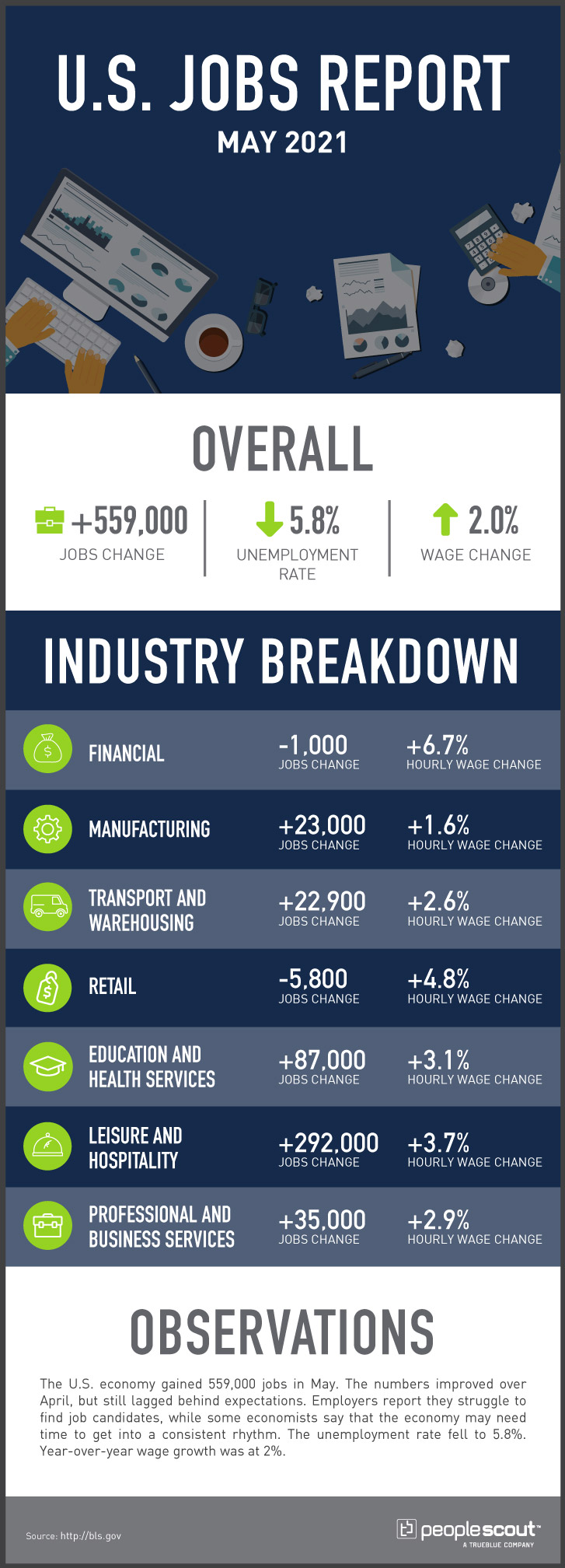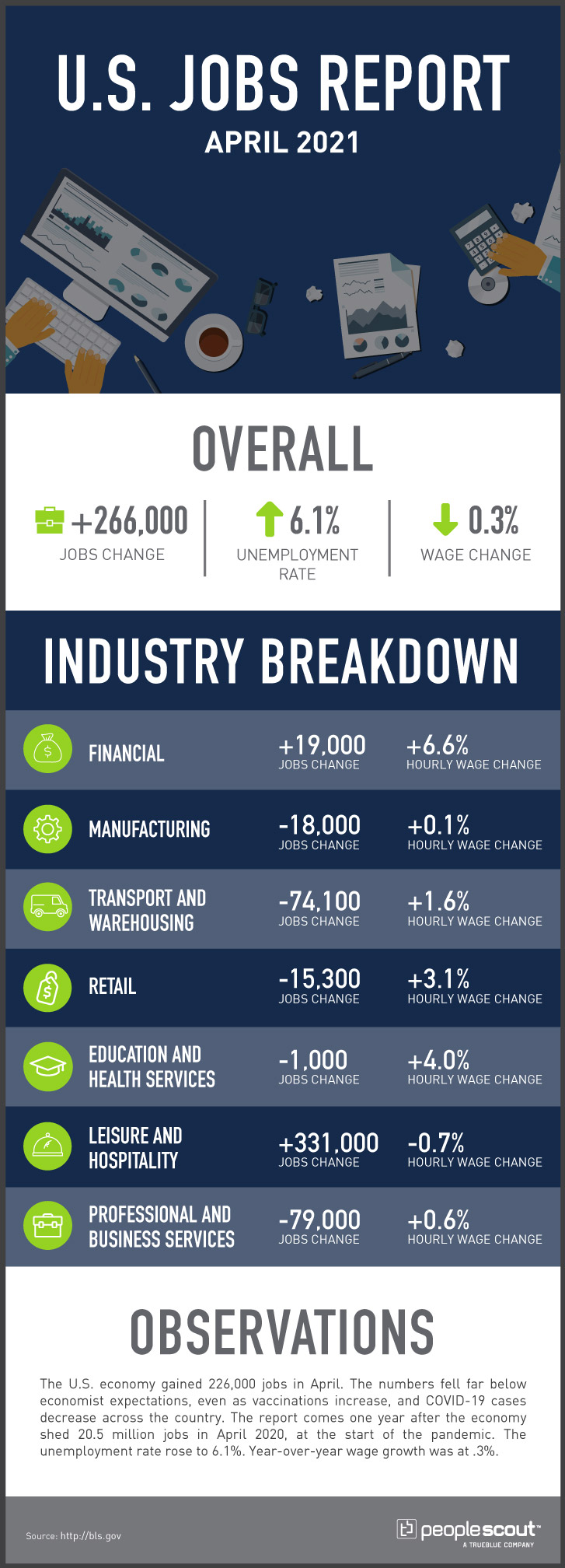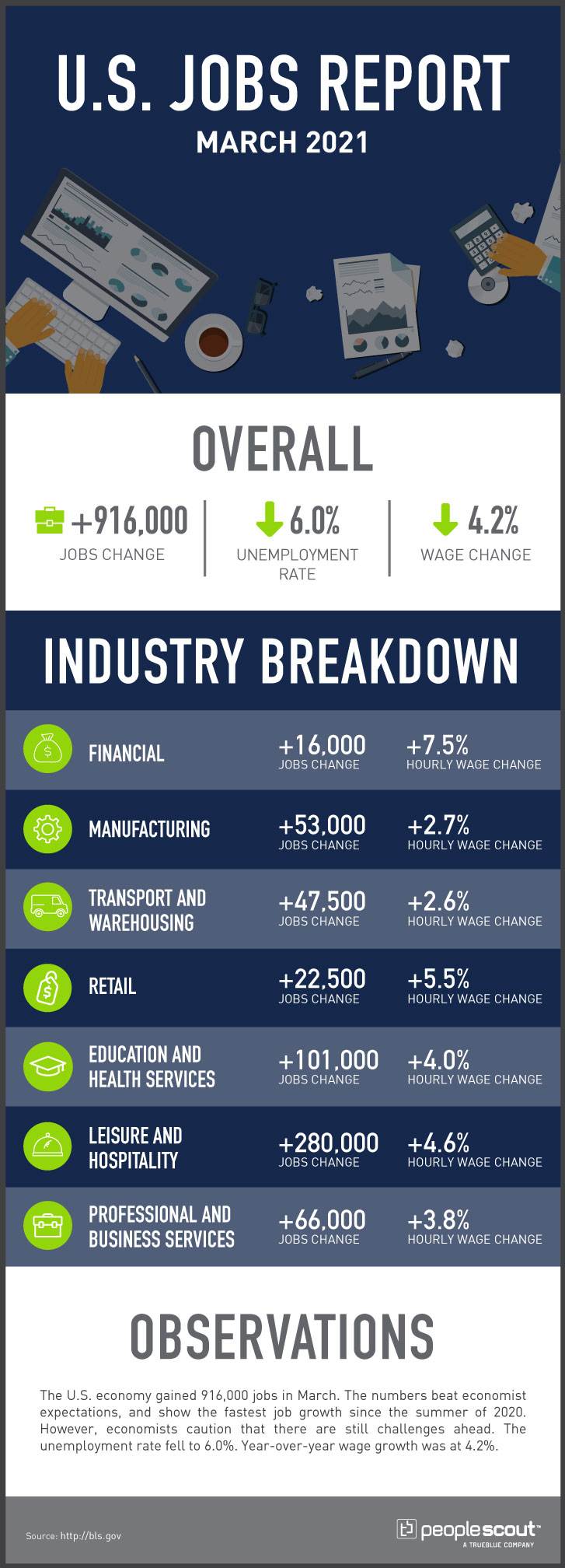U.S. employers added 210,000 jobs in November, missing analyst expectations and providing mixed signals about the state of the economy. The unemployment rate fell to 4.2%. Year-over-year wage growth remained high at 4.8%.
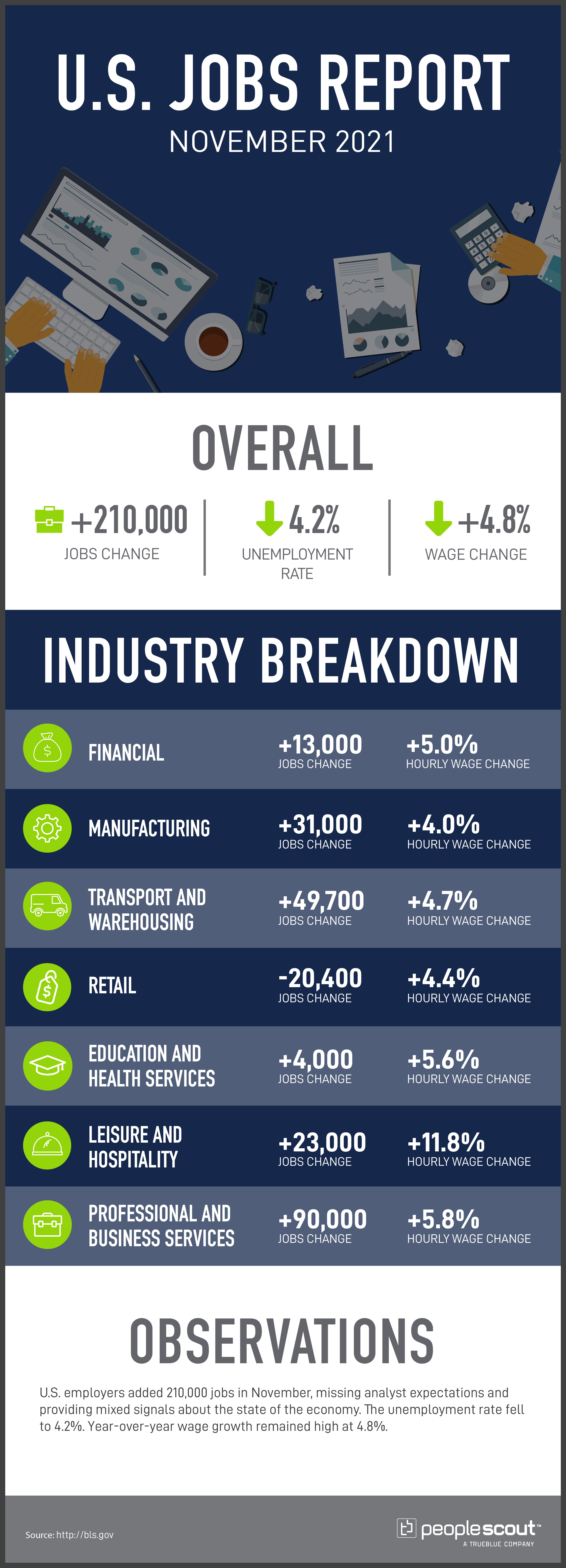
The Numbers
210,000: The U.S. economy added 210,000 jobs in November.
4.2%: The unemployment rate fell to 4.2%.
4.8%: Wages rose 4.8% over the past year.
The Good
November’s jobs report is confusing, but there is good news. The labor participation rate, which has been largely flat, ticked up in November to 61.8%, the healthiest number since the pandemic began. As the New York Times reports, there was a large increase in labor force participation by both Hispanic men and Hispanic women, some of the hardest hit demographics. Additionally, the unemployment rate fell to 4.2%, despite the relatively weak jobs numbers.
The Bad
The headline number of 210,000 jobs significantly missed analyst expectations. As MarketWatch reports, economists had predicted a gain of 573,000 new jobs. The retail sector lost jobs, while the leisure and hospitality sector, which has led job growth in recent reports, showed a gain of only 23,000. Despite the strong growth in 2021, the economy still remains 4 million jobs short of pre-pandemic levels. Additionally, rising wages still point to a labor shortage, as wages in labor and hospitality soared 11.8% over the past year.
The Unknown
What makes November’s jobs report so confusing is the survey data used to come up with the 210,000 number. The Labor Department relies on two separate surveys to make those estimates, one of employers and another polling households. In November, employers reported 210,000 new jobs, but households reported that 1.1 million more people were working than the month before. Experts quoted in the New York Times say a gap that large is unprecedented, and it provides a much cloudier picture about the health of the economy.

